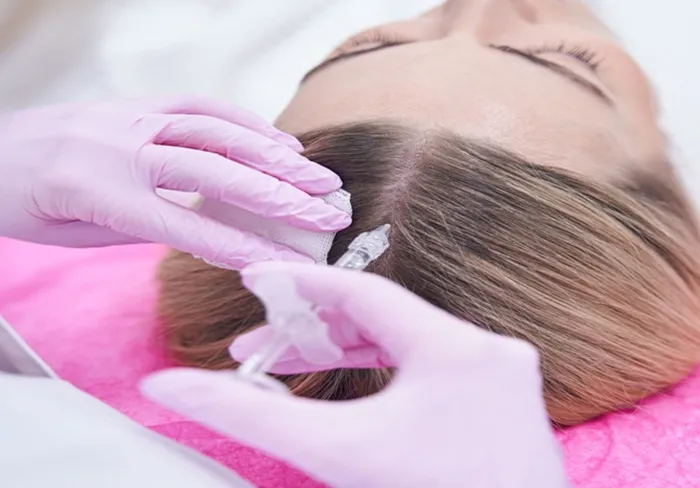Hairline recession is a common concern for many individuals, particularly as they age or experience hair loss. Fortunately, advancements in hair transplant technology have made it possible to restore a natural-looking hairline. This article will explore the process of getting a new hairline through hair transplant surgery, the techniques involved, and what to expect during and after the procedure.
Understanding Hairline Recession
Hairline recession refers to the gradual movement of the hairline backward, creating a higher forehead. This process is often associated with male pattern baldness (androgenetic alopecia) but can also affect women. Hairline recession can be influenced by genetic factors, hormonal changes, aging, and lifestyle choices.
When Does Hairline Recession Typically Begin?
Hairline recession can begin at any age, but it is most commonly observed in individuals in their 20s and 30s. According to the American Hair Loss Association, approximately 25% of men will begin experiencing hair loss by the age of 25, and about 50% will experience significant hair loss by the age of 50. In women, hairline recession can also occur, often due to hormonal changes during menopause or other life events.
Hairline Transplant: A Solution for Receding Hairlines
A hairline transplant is a surgical procedure that involves relocating hair follicles from a donor area (typically the back or sides of the scalp) to the recipient area where hair loss has occurred. This procedure can effectively restore a natural-looking hairline and provide long-lasting results.
What Can You Achieve With a Hairline Transplant?
With a hairline transplant, you can achieve several benefits, including:
- A lower hairline
- An even hairline
- Enhanced hairline density
- A more feminine or masculine hairline
- A natural-looking hairline
- Permanent results
- A younger appearance
- Improved self-confidence
- Techniques Utilized for Hairline Restoration
There are three primary techniques used for hairline transplantation.
Follicular Unit Extraction (FUE): FUE involves extracting individual hair follicles from the donor area using a micro-punch tool. This method leaves minimal scarring and is ideal for patients who prefer a shorter hairstyle.
Direct Hair Implantation (DHI): DHI is a variation of FUE where the extracted follicles are directly implanted into the recipient area using a special tool. This technique provides precise placement and a natural appearance.
Follicular Unit Transplantation (FUT): FUT involves removing a strip of scalp from the donor area and dissecting it into individual follicular units. This method can provide more grafts in a single session but leaves a linear scar at the donor site.
How to Achieve the Best Hairline Transplant
To achieve the best results, your surgeon will follow several steps.
Designing the Hairline: The new hairline is designed to match your facial features and desired aesthetic.
Opening Hosting Channels: The surgeon creates small channels in the recipient area at the correct angle for natural hair growth.
Implanting Follicles: The extracted follicles are carefully implanted into the recipient area, ensuring a natural transition and density.
How Long Does a Hairline Transplant Last?
The results of a hairline transplant are permanent. The transplanted hair follicles, taken from the donor area, are resistant to the effects of dihydrotestosterone (DHT), the hormone responsible for hair loss. This means that the new hairline will last for a lifetime.
How Low Can Your Hairline Be Transplanted?
The maximum limit for hairline transplantation is where your facial muscle begins. Your surgeon will determine the optimal position for your new hairline based on your facial structure and desired outcome.
Female Hairline Transplants
Hairline recession can also affect women, often due to hormonal changes or other factors. A hairline transplant can restore a natural-looking hairline and improve confidence. Key considerations for female hairline transplants include:
- Avoiding implantation on facial muscles
- Creating a shaded transition between the forehead and hairline
- Achieving a natural, feminine hairline
Why Do Women Need Hairline Transplants?
Hairline recession in women can be caused by androgenetic alopecia, stress, hormonal changes, or other hair loss-related diseases. A hairline transplant can effectively address these issues and restore a natural appearance.
Conclusion
A hairline transplant can provide a permanent solution for individuals experiencing hairline recession. By choosing an experienced surgeon and following proper aftercare instructions, you can achieve a natural-looking hairline that enhances your appearance and boosts your confidence. If you are considering a hairline trasplant, consult with a qualified specialist to discuss your options and develop a personalized treatment plan.
Related topics:
- Can You Get a New Hairline? Exploring Options and Techniques
- Can Hair Transplants Grow Long? A Comprehensive Guide
- How Much Does a New Hairline Cost?


